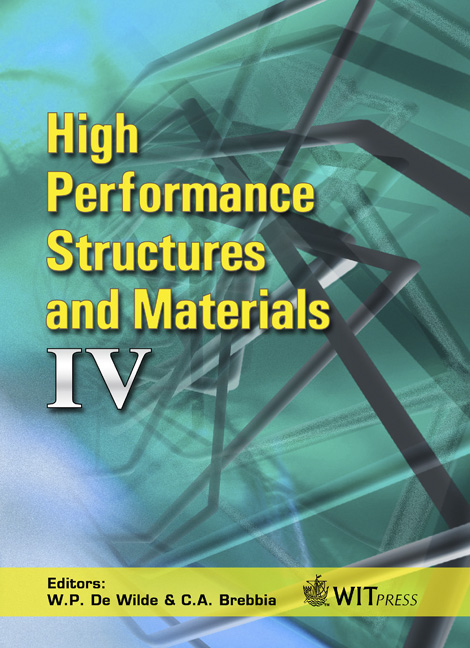Optimisation At The Conceptual Design Stage With Morphological Indicators: Design For Strength Or Design For Stiffness?
Price
Free (open access)
Transaction
Volume
97
Pages
10
Page Range
401 - 410
Published
2008
Size
619 kb
Paper DOI
10.2495/HPSM080411
Copyright
WIT Press
Author(s)
T. Vandenbergh, W. P. De Wilde & P. Latteur
Abstract
Within the framework of sustainable development we strive for constructions with a minimum volume of material. When we only consider criteria on resistance and buckling, at the stage of conceptual design a clear hierarchy among the different structural topologies can be established with Morphological Indicators (MI). MI are dimensionless numbers that represent a property of a structure (e.g. volume) and depend only on a small number of dimensionless variables (in its most simple appearance only the slenderness of the structure). We define the slenderness as L/H, L being the horizontal and H the vertical dimension of the rectangle that inscribes the structure. This allows one to compare the efficiency of structures objectively, with only a reduced number of variables to consider. Hence MI allow a very quick shape and topology optimisation at the conceptual design stage if only element strength (resistance) and buckling are to be considered. Though a lot of design problems, especially for lightweight structures, are characterized by stiffness constraints: global instability, upper limit on static displacements, acceptable vibrations… In such cases one of the main assumptions of the theory of MI is not valid, since fully stressed design does no longer guarantee the optimal section distribution. Therefore, problems subjected to stiffness related constraints have to be analyzed by different methods allowing the optimisation of the sizing of the different elements. Recent research enables determination of whether one has to deal with a design for strength or a design for stiffness problems. This paper presents schematically the theory of MI and the method to distinguish a strength characterized problem from a stiffness characterized one at the conceptual design stage. An example illustrates the design process. The principal aim is not to criticize the efficiency of the theory of MI but to point out when the theory can be applied and when not. Keywords: conceptual design, morphological indicator, design for strength, design for stiffness, volume optimisation, fully stressed.
Keywords
conceptual design, morphological indicator, design for strength, design for stiffness, volume optimisation, fully stressed.





